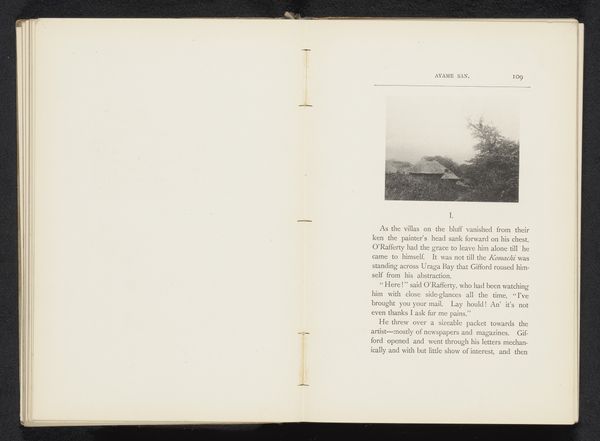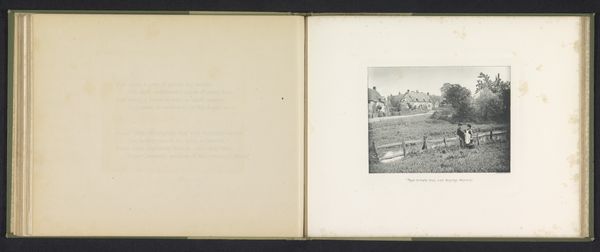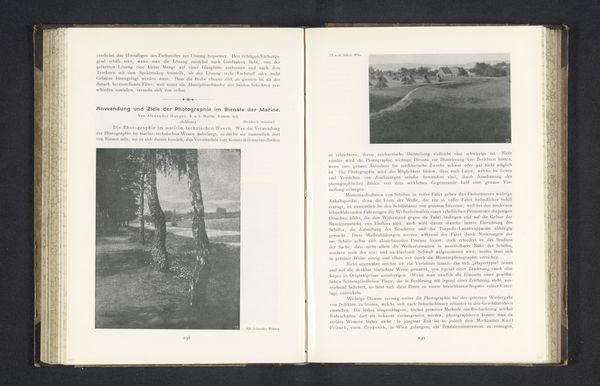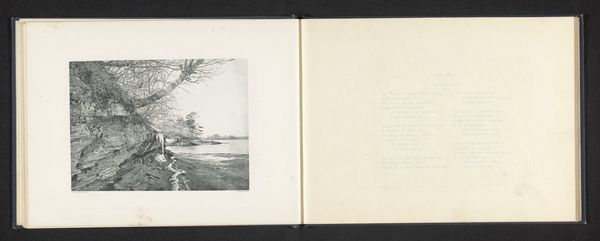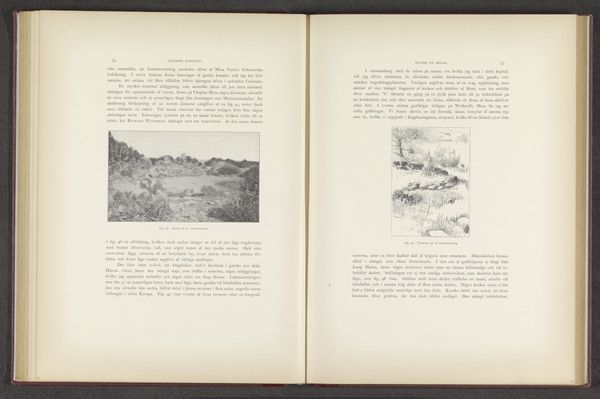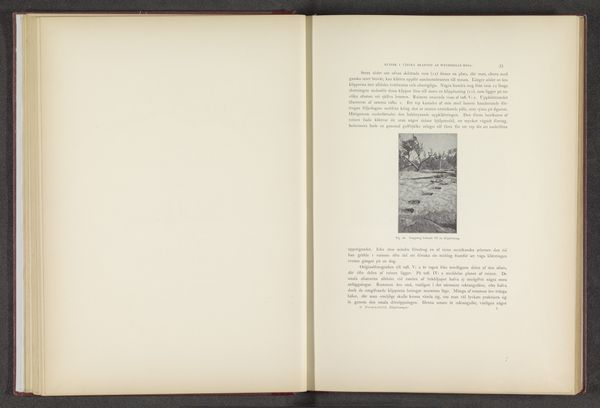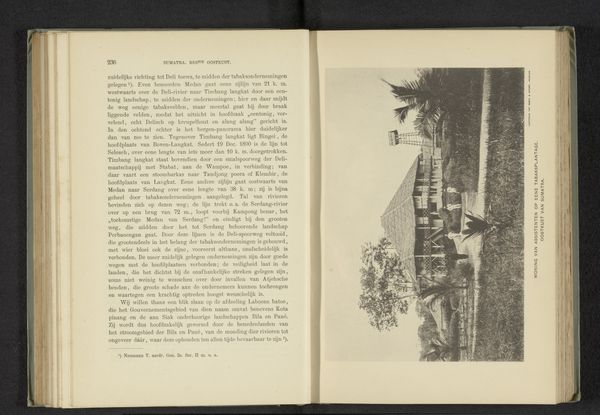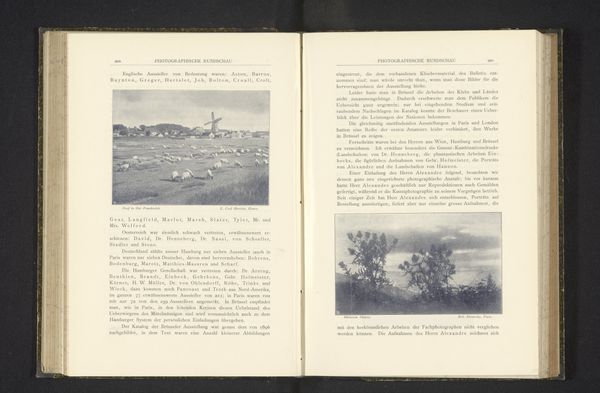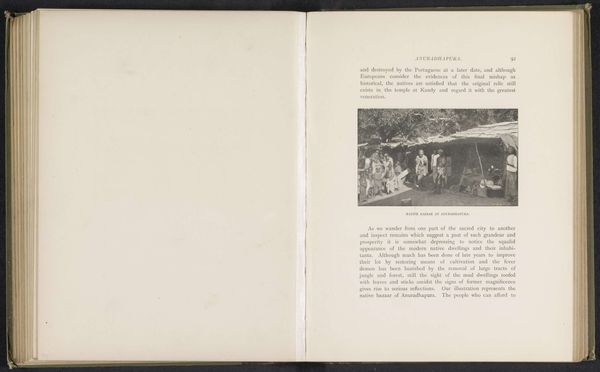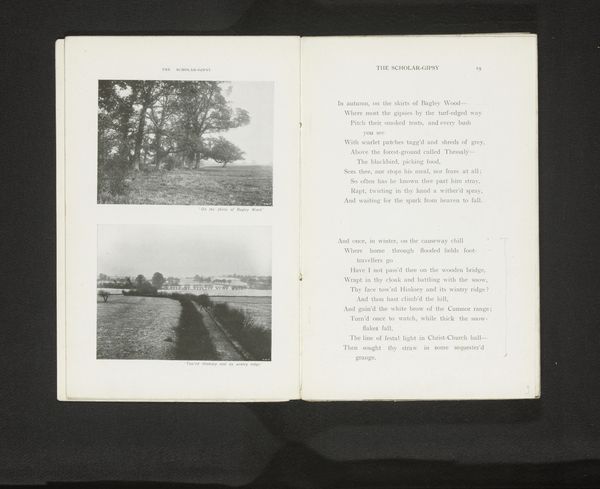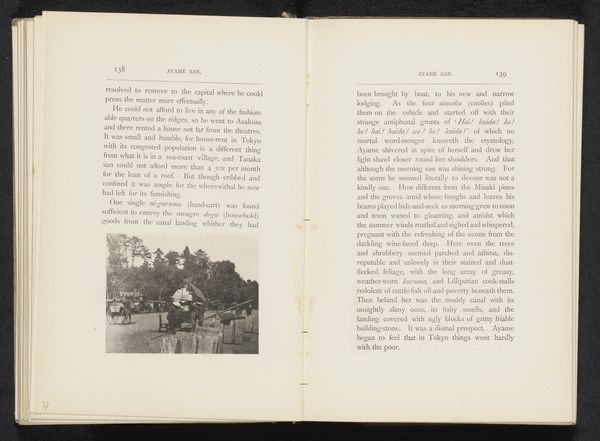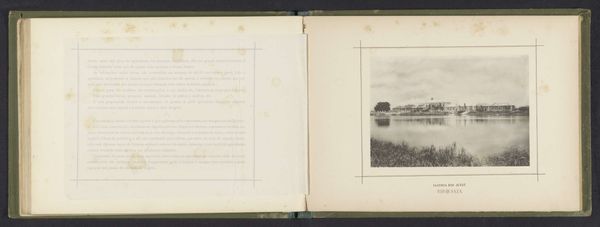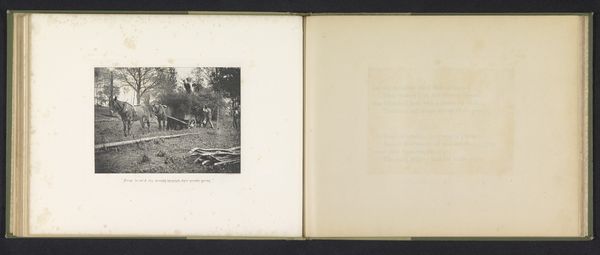
print, photography, sculpture, site-specific
# print
#
asian-art
#
landscape
#
photography
#
ancient-mediterranean
#
sculpture
#
site-specific
Dimensions: height 83 mm, width 120 mm
Copyright: Rijks Museum: Open Domain
Editor: This print from 1896 by Henry William Cave shows a "Miniature dagaba on the Ruanweli platform." It's fascinating how such a small photograph can capture such a large architectural space. The image evokes a sense of timelessness and the weight of history. What stands out to you? Curator: It's compelling how the dagaba, though miniature, centers the entire composition. The dagaba form itself represents the enlightened mind of the Buddha, and also contains relics of his body and belongings. It’s interesting that the dagaba is centered – consider how this mirroring within the book replicates and honors the object? How does the surrounding architectural space then change? Editor: I hadn't thought about the symbolism of the dagaba itself! I was more focused on it as a structure in a wider context. Knowing that, I wonder if Cave was trying to highlight the dagaba's significance, perhaps drawing parallels to his own culture’s relic tradition? Curator: That's insightful. This space is presented as a sort of primordial map of the cosmos itself, and the dagaba marks the symbolic axis mundi, the meeting point between the earthly and the divine realms. The elephant carvings mentioned in the text are similarly symbolic, a symbol of strength, loyalty, and auspiciousness in Buddhist iconography, and function like load-bearing columns of beliefs. Editor: It is amazing how much historical context is wrapped up in this single image and text on the page! This photograph seems not just a picture of a place but an encapsulation of a whole belief system. Curator: Exactly. Cave doesn't merely capture the dagaba's likeness; he invites us to contemplate the enduring power of faith and its lasting impact on shaping the world around us.
Comments
No comments
Be the first to comment and join the conversation on the ultimate creative platform.
